
Global Health Engagement strengthens partnerships
.ashx?h=407&la=en&mw=720&w=720&hash=3FE8A020D7510361BD79D4299CC037FFA458DAA94258CCCEA392883CF985955A)
U.S. Navy Capt. Michael Sullivan, a pediatrician assigned to the hospital ship USNS Comfort, gives a sticker to a two-year-old boy after examining his skin infection at a temporary medical treatment site in Port-Au-Prince, Haiti. During Comfort’s deployment, the crew worked with health and government partners in Central America, South America, and the Caribbean to provide care on the ship and at a temporary medical treatment site, helping to relieve pressure on national medical systems, including those strained by an increase in cross-border migrants. (U.S. Navy Photo by Mass Communication Specialist 3rd Class Maria G. Llanos)
Health and Human Services Secretary Alex Azar describes the work of the international crew of the USNS Comfort as “near miraculous.” He was aboard the U.S. Navy hospital ship during its deployment to South America earlier this year and saw firsthand the impact of forward deployed health and humanitarian assistance missions.
On board, he met a man who had been blind for several years. The Comfort and its staff performed cataract surgery, restoring the man’s sight. After the procedure, “he actually looked up and the first thing he saw was a clock on the wall and pointed to it,” Azar recalled. “He said he hadn’t seen a clock in a decade.”
Azar recounted this story Dec. 3 at the 2019 annual meeting of the Society of Federal Health Professionals, calling it and the mission of the Comfort as “perfect examples of international humanitarian cooperation and the great American generosity made possible by our men and women in uniform and our medical professionals and civilian servants throughout the U.S. government.”
In all, the Comfort’s deployment touched the lives of nearly 69,000 people in 12 countries in South America, Central America, and the Caribbean through dental work, surgeries, family medicine, and eye exams. Medics also distributed nearly 31,000 pairs of prescription eyeglasses.
The Comfort deployment underscores the Department of Defense’s commitment to its role in Global Health Engagement, a critical driver to advance U.S. national security interests around the world.
.ashx?h=350&la=en&w=610&hash=12D887A7F8095FD3670B9A10D704995149BEBE32B83959DF0FA9EA960656B327)
U.S. Military Sealift Command Cmdr. Andrew Chen, chief mate aboard the hospital ship USNS Comfort, (right), gives U.S. Air Force Maj. Gen. Lee E. Payne, (center), assistant director for Combat Support, Defense Health Agency, and Tom McCaffery, assistant secretary of Defense for Health Affairs, a tour of the ship while off the coast of Port-Au-Prince, Haiti. Comfort is working with health and government partners in Central America, South America, and the Caribbean to provide care on the ship and at land-based medical sites, helping to relieve pressure on national medical systems, including those strained by an increase in cross-border migrants. (U.S. Navy photo by Mass Communication Specialist Seaman Jordan R. Bair)
The U.S. military has long recognized the close link between health and security – and the operational and strategic importance of Global Health. In the early 1900s, U.S. Army surgeon Major Walter Reed discovered the causes of yellow fever, which claimed the lives of more U.S. soldiers than combat during the Spanish-American War. Since then, the Department’s role in global health builds upon the foundation of readiness, recognizing that U.S. forces could be deployed anywhere in the world, and on a moment’s notice – and that they must be prepared for any health threats they might face. In recent years, the strategic focus on the linkage of global health and security has been increasingly reflected in the National Security Strategy, the National Defense Strategy, the National Biodefense Strategy, and the Global Health Security Strategy.
Beyond protecting U.S. forces, the Department recognizes that by enhancing readiness, increasing interoperability, and strengthening partnerships, Global Health Engagement activities serve as key enablers of the National Defense Strategy.
Advancing readiness of the force
The Military Health System carries out its mission to prepare military medical teams to provide the best possible health care on the battlefield and ensure service members are medically ready to deploy. Global Health Engagement activities advance this readiness, providing critical training opportunities to enhance military medical capabilities.
The U.S. remains at the global forefront for infectious disease prevention. The Military Health System’s cutting-edge research and development program continues to develop vaccines and countermeasures for infectious disease to enhance global health security – from Zika to dengue fever. These capabilities are important not only to protect U.S. and partner forces, but to combat health threats that can destabilize societies and create conditions where conflict is likely to emerge.
Contributing to the overall effort, as part of the Defense Health Agency’s combat support capabilities, the Health Surveillance Explorer communicates disease outbreak surveillance through immediate reporting and monthly surveillance summaries, providing critical information to inform Force Health Protection priorities and monitor threats to global stability. The U.S. military’s research labs in South America, Africa, Southeast Asia, and the Middle East serve on the front lines with partner nations to improve disease surveillance and outbreak response assistance.
The first goal of the U.S. Government Global Health Security Strategy calls for strengthening partner country global health security capacities. “Achieving global health security requires all nation-states to be capable of preventing, detecting, and responding promptly and effectively to health security risks and public health emergencies of international concern,” according to the strategy published earlier this year. “To help those in need while protecting Americans at home and abroad, the United States will help partners achieve international global health security standards.”
One example supporting this strategy occurred in March 2019 when U.S. Africa Command and the Ugandan Ministry of Defense co-hosted the African Malaria Task Force. Experts from 18 African partner nations, nongovernmental organizations, nonprofit organizations, and the U.S. gathered to share best practices and lessons learned in combating the primary disease that kills in Africa.
“The purpose [of AFMT] is to bring together scientists and policymakers in order to strengthen and expand effective, sustainable malaria control programs, provide support to African partner nations, and to assist national and regional malarial programs,” said U.S. Air Force Lt. Col. Edward Kosterman, public health officer, Office of the Command Surgeon, AFRICOM, in an AFRICOM news release. “We want to encourage our partners to take a whole-of-government approach to combat malaria, by sharing resources, strategies, and expertise while leveraging their ministries of defense as key assets in resource-constrained environments.”
AFMT has grown since its inception in 2011 to include 21 African partner nations, testament to the benefits of strengthening collaboration to combat a disease that the Centers for Disease Control and Prevention says in 2016 claimed 90 percent of reported deaths worldwide in Africa.
Building partnerships and interoperability
Global Health Engagement activities also build interoperability through subject matter expert exchanges with partners and allies and joint exercises to improve response to disasters or outbreaks, contributions to globally integrated health services, and partnerships to advance shared interests and maintain regional stability and security.
Earlier this year, the Department of Defense partnered with the United Arab Emirates to create a dedicated trauma, burn, and rehabilitative medicine capability in Abu Dhabi – an effort that will both sustain and enhance wartime surgical skills while building interoperability with U.S. partners across the region.
Military health education and training exchanges, including sharing advances in military trauma care and patient movement, promote mutual awareness, familiarity, and confidence in military medicine and enhancing Partner Nation military medical capabilities.
As part of the Comfort’s deployment this year, the ship’s medical staff collaborated with Colombian military and civilian medical experts to exchange treatment techniques and best practices.
“It’s an event of supreme importance because the U.S. military is teaching us many ways to prevent epidemic illnesses that all under-developed countries, like Colombia, have to confront,” said Lt. Col. Janeth Rosero Reyes, Colombian army director of general medicine at Battalion Cordoba. “My entire team learned a lot of techniques and we will begin to share them with the goal to generate an impact in our foundation.”
Enhancing Security Cooperation
Global Health Engagement enhances security cooperation, fostering critical relationships and cooperation so that when health or other security threats arise, the U.S. is ready and able to partner to advance shared interests.
The Defense HIV/AIDS Prevention Program, for example, partners with 55 other countries’ militaries to curb the global HIV/AIDS epidemic. Over the past nearly two decades of work, DHAPP has provided direct military-to-military cooperation and support to partner nations through activities like training health care workers to provide clinical services, equipping laboratories and clinics for testing and diagnostics, promoting health education, linking individuals with treatment, and more. This long-standing singular focus on a disease continues to leverage critical partnerships while addressing a global epidemic, reflecting the unique and powerful capabilities behind Global Health Engagement.
“As the Military Health System works to deliver on the National Defense Strategy’s priorities to advance readiness and strategic partnerships and alliances, Global Health Engagement remains a strategic tool for combatant commands,” said assistant secretary of Defense for Health Affairs Tom McCaffery, “and the Military Health System remains committed to leveraging the vast repository of Global Health Engagement assets to support operational readiness, recognizing the U.S. military is better prepared, better protected and stronger through partnership as a result.”
Ship-based Global Health Engagement
Article
12/4/2019
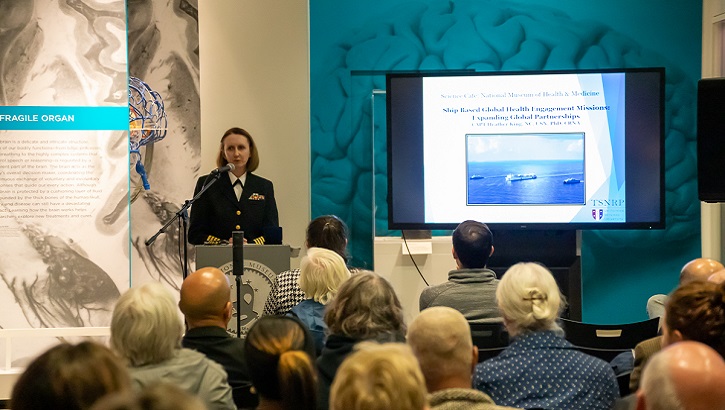
Global health engagement is an important priority for military medicine
Network of researchers advancing warfighter readiness
Article
12/4/2019
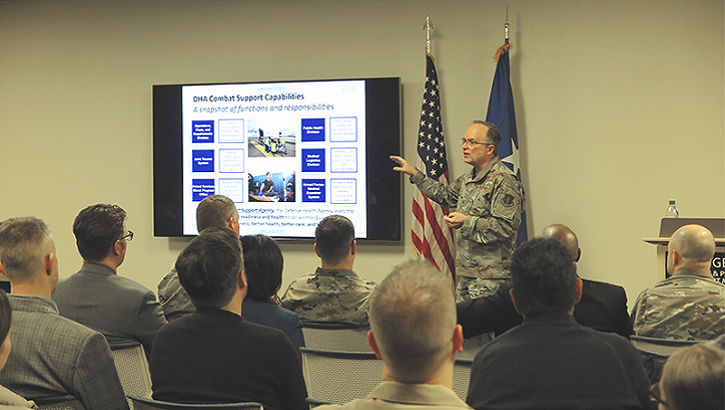
In fiscal year 2020, GEIS awarded approximately $60 million to more than 20 DoD laboratories and U.S. government partners
World AIDS Day puts spotlight on landmark DoD study
Article
12/2/2019
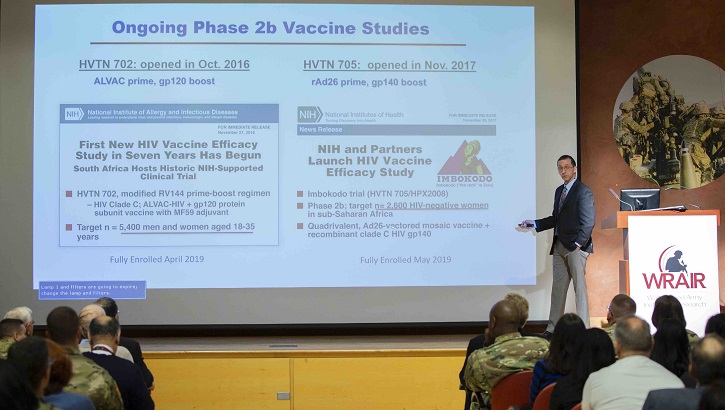
Vaccine study shows infection risk lowered by 31 percent, offering hope for future
USNS Comfort strengthens partnership with Jamaica
Article
11/7/2019
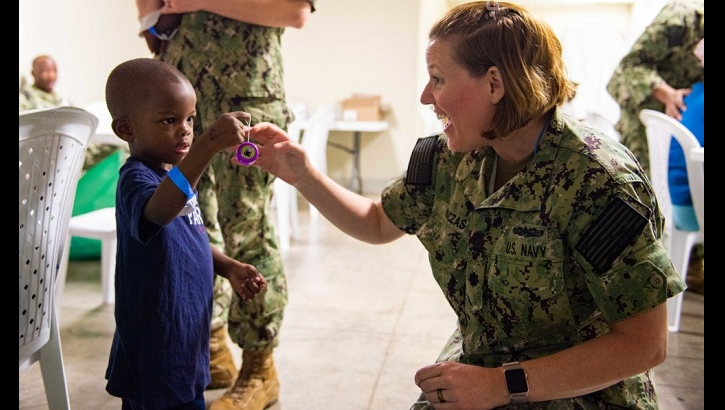
This marks the Comfort’s third visit to Jamaica
Honduran MEDRETEs provide invaluable surgical, training opportunities
Article
10/30/2019
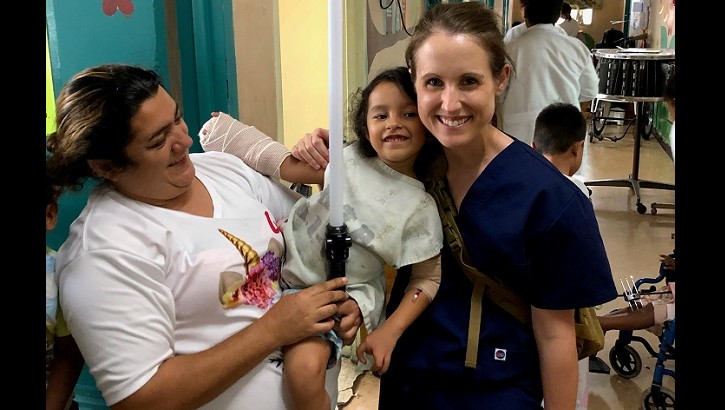
MEDRETEs play a critical role in the training and readiness of military medical personnel
Comfort strengthens partnership following successful medical mission
Article
10/21/2019
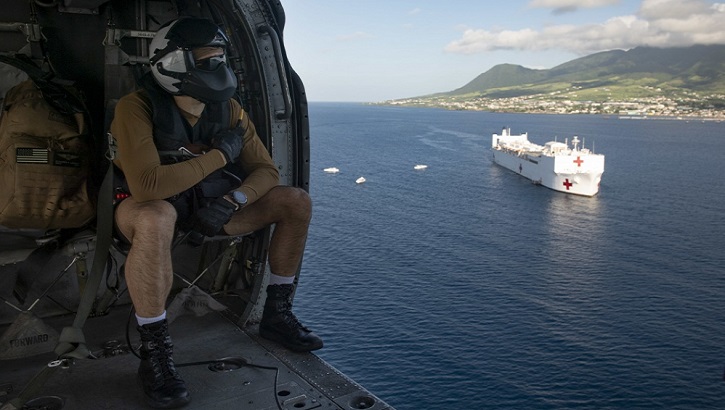
More than 800 medical professionals provided care for 3,677 patients
Comfort strengthens partnership with Grenada
Article
9/27/2019
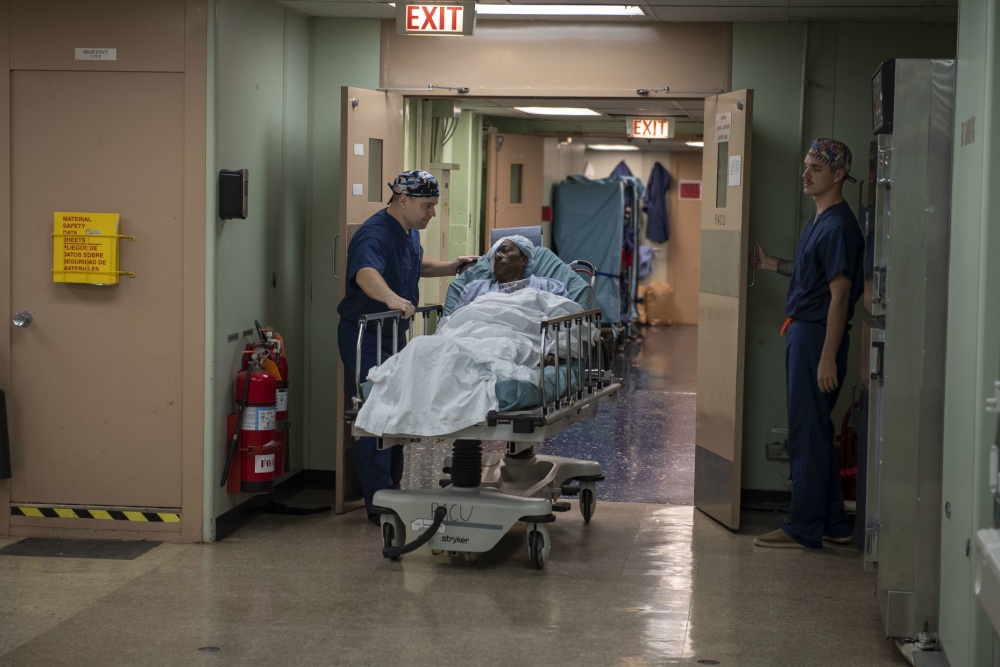
This marks the first visit to Grenada and the seventh to the region since 2007
U.S. builds bonds in Papua New Guinea
Article
9/17/2019
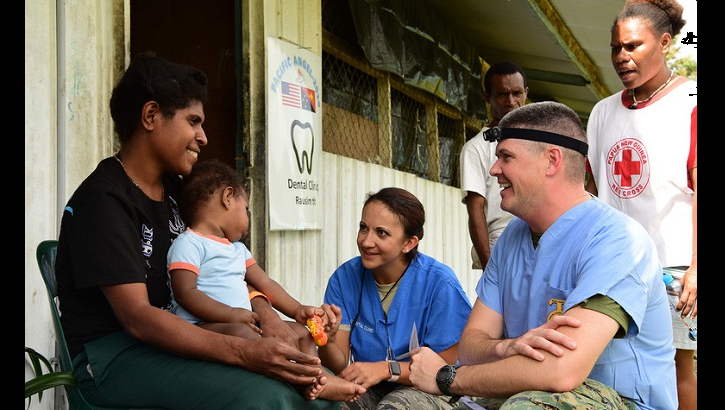
This is the second Pacific Angel exercise conducted in Papua New Guinea
USNS Comfort completes medical mission in Peru
Article
7/22/2019
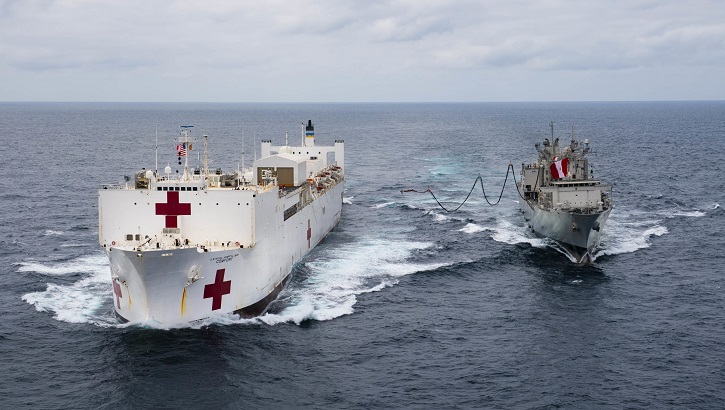
This marks USNS Comforts’ seventh deployment to the region since 2007
Vice President Pence tours USNS Comfort before its Latin America deployment
Article
6/20/2019
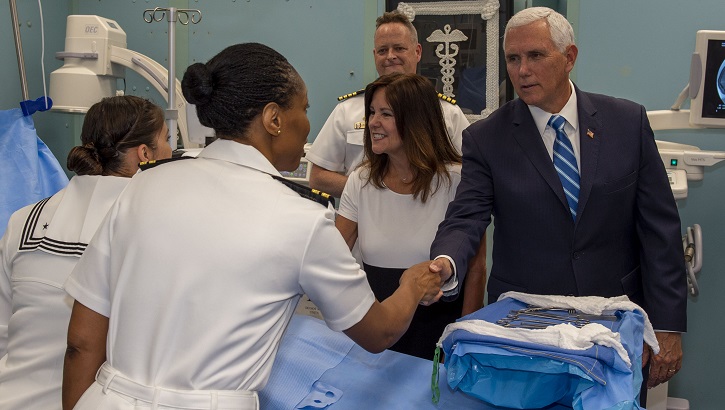
The vice president called the deployment a lifesaving mission
German allies visit JBSA-Fort Sam Houston on 75th anniversary of D-Day
Article
6/14/2019
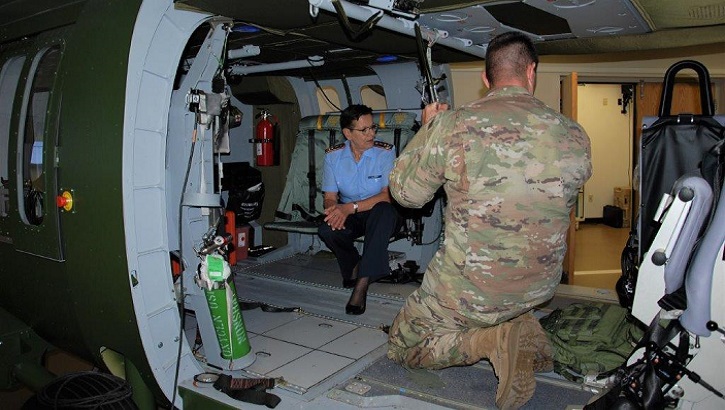
The purpose of this visit was to further strengthen the bonds and interoperability programs between our allied countries or partner nations
AFRICOM holds annual Command Surgeon Conference
Article
6/3/2019
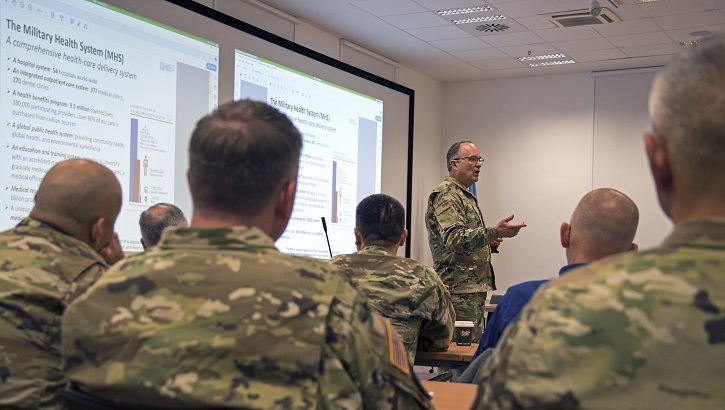
The conference brought together medical professionals from across the command, and interagency and foreign partners, to enable collaboration and discuss areas of concern
DoD joins national global health security effort
Article
5/13/2019
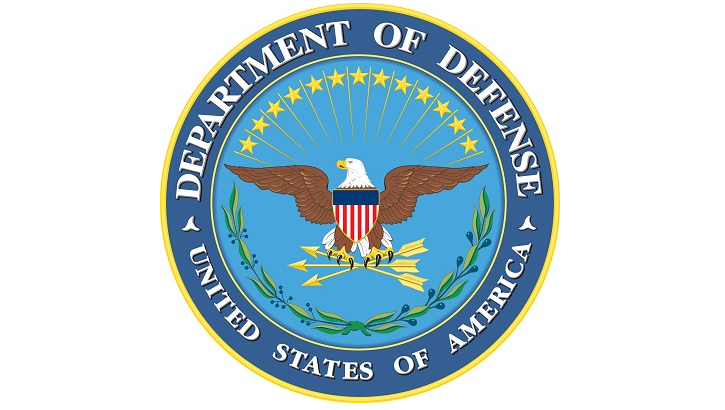
The Global Health Security Strategy outlines the U.S. approach to strengthen Global Health Security
Navy hospital ship to deploy in response to humanitarian crisis in Latin America
Article
5/10/2019
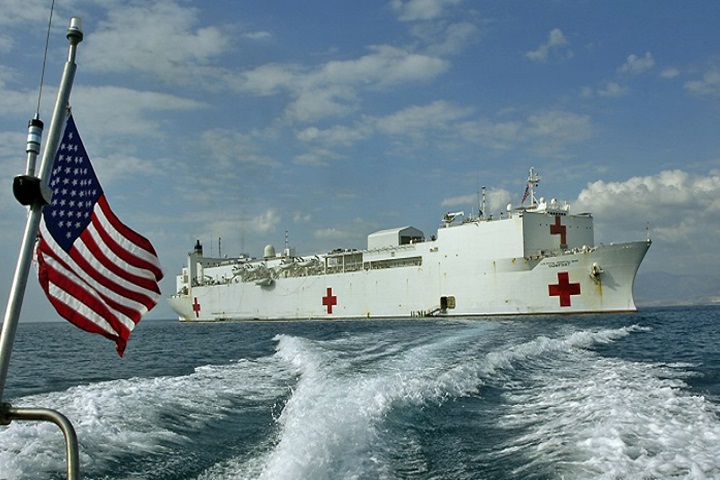
USNS Comfort represents our enduring promise to our partners in the Western Hemisphere
Field emergency room drills strengthen bonds of U.S. Navy, Swedish medics
Article
4/24/2019
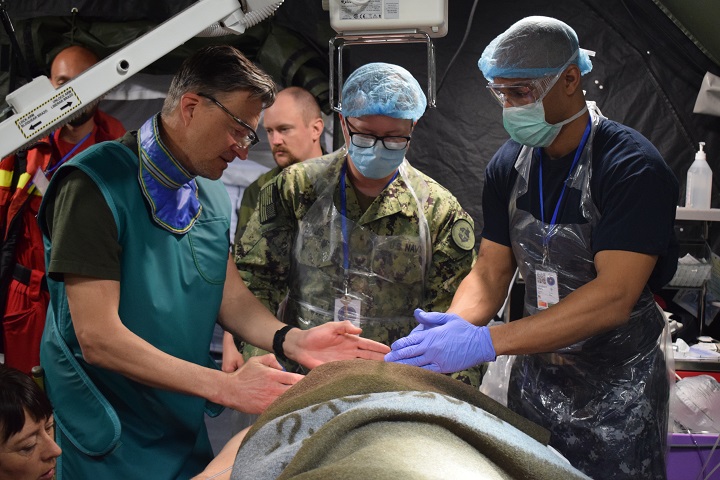
Vigorous Warrior is a biannual readiness event organized by the NATO Military Medicine Centre of Excellence





















.png)









No hay comentarios:
Publicar un comentario